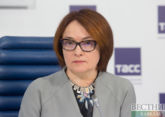The S&P international rating agency forecasts a gradual increase in real incomes of Russians, the agency said in a report.
"The level of real disposable income and customer confidence may gradually increase in the long term due to relatively low inflation," the agency experts said, adding that this year Russia expects growth in retail lending, which may reach 13-15%.
Improving the Russian economic situation will also help stabilize the operating environment for the banking sector - it will help to stabilize the financial profiles of Russian banks, the borrowing capacity of which will remain stable in general," S&P said, adding that in the current situation banks have to adapt to low interest rates.
The vice-rector of the Academy of Labour and Social Relations Alexander Safonov, speaking to a correspondent of Vestnik Kavkaza, noted that the link between low inflation and the growth of real incomes of Russians arises only when one important condition is met. "Indeed, today there is a certain positive trend in a number of industries that give us a positive wage growth dynamics. For example, in the framework of implementing the president's 'May decrees', the wages of workers in the public sector are increasing," he explained.
At the same time, the problem of uneven distribution of the wage fund will not disappear. "About 80% of the population has only 48% of the wage fund. There is no possibility to increase wages for the sectors related to services - consumer demand is not growing. And real incomes of the population constantly decline in these sectors. The process may also affect public sector employees if the economic strategy, which will allow the economy to grow above 2% per year, is not implemented," Alexander Safonov warned.
As for the forecast of growth in retail lending, it is a continuation of the trend over the last year and a half. "Now retail lending is largely due to the use of so-called schemes to wages, because of which the population's obligations to microfinance organizations currently amount to at least 1.5 trillion rubles. People are simply tired of saving money. In fact, if consumer lending grows at the same rate, we can get a picture of the US in 2008 - a credit bubble leading to the bankruptcy of banks and microfinance companies in the long term," the vice-rector of the Academy of Labour and Social Relations concluded.










